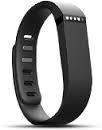My Facebook and Twitter feeds are full of people talking about the new gadgets they got for Christmas. Tracking has gone mainstream as many of those gadgets are fitness and activity tracker devices. I thought I’d share a bit about what I’ve learned as an avid tracker for some of these newbies.
My Facebook and Twitter feeds are full of people talking about the new gadgets they got for Christmas. Tracking has gone mainstream as many of those gadgets are fitness and activity tracker devices. I thought I’d share a bit about what I’ve learned as an avid tracker for some of these newbies.
I have been using apps and devices to track my activities for over 7 years. When Nike in-shoe sensors came on the market in 2006, I was an early adopter and since then have upgraded to various GPS watches and apps like RunKeeper on my phone. I love tracking my runs and hikes. It adds an extra sense of accomplishment seeing exactly how far you’ve gone, elevation climbed and how fast you’ve traveled. Seeing my progress overtime was especially motivating and helpful when training for upcoming races. It led me to want to track more. I definitely felt myself getting caught up in the quantified self movement.
So when we decided to get Fitbit trackers at Wellpepper, I was all over it. I was very excited to start tracking activities outside of runs. I chose the wristband format while Mike and Anne chose the Fitibt Zips that clip onto your pocket or waistband. I liked the idea wearing the Fitbit at all times tracking all activities (including sleep) and thought I would have a better chance of not losing it. We found this to be true right away as Mike lost his first two Fitbits. (Protip: Clip your Fitbit with your Fitbit inside your pocket.) Anne wasn’t too keen on the look of the sporty black wristband so chose the smaller out of sight zip and also appreciated that the Zip didn’t need to be charged. (However, both Anne and Mike had over a week of no activity recorded when their batteries actually died.)
Initial findings were very fun and intriguing: an Ultimate Frisbee game is about 8,000 steps and a good round of golf about 18,000 steps with up to 20,000 steps if that happened to be a bad round of golf. The most lucrative activity turned out to be dancing, it’s surprising how many steps you can take while dancing at a wedding! (23k) Step counts varied between the different Fitbit types. As my steps were tracked by the movement of my arm, I definitely got credit for additional steps including a few 1000 from petting an upset dog during a thunderstorm. This caused some debates over the accuracy and fairness of the Wellpepper Fitbit leaderboard, which is definitely a fun and motivating feature of the Fitbit app.
Definitely the most surprising findings were how many steps could add up with regular day to day activities. I found that I generally took around 1000 steps just walking around the house and getting ready in the morning. A walk to the store to grab a few groceries could garner up to 2000 steps. Turn that trip into a walk to the farmer’s market and you could easily generate 4k steps! It was surprising how a few small decisions could turn a relatively normal day into highly productive and active day. I found this infographic: The Exercise Experiment: A Tale of Two Days does a great job of showing the difference small choices can make.
Even more surprising, or even shocking, was how many steps I didn’t take on an inactive day. I work from home and it’s not uncommon for me to grab a cup of coffee in the morning, jump on my laptop and get to work. Some days, the time can slip by and before you know it, the day is gone. I never used to worry about it because when I am not working, I am highly active. However, after I came across The Truth about Sitting, I decided I needed to be more aware of my overall activity. I think this has been the greatest impact of the Fitbit. I thought that I might dive deeper into analyzing my runs or hikes, but it has actually created this awareness to keep me moving all the time. It reminded me of something John Mattison (CIMO of Kaiser Permanente) said at FutureMed:
It’s not about wearing a million sensors, we don’t need digital nannies, it’s about becoming more mindful.

